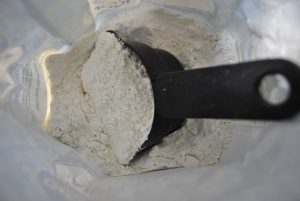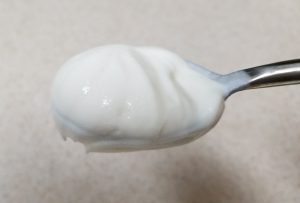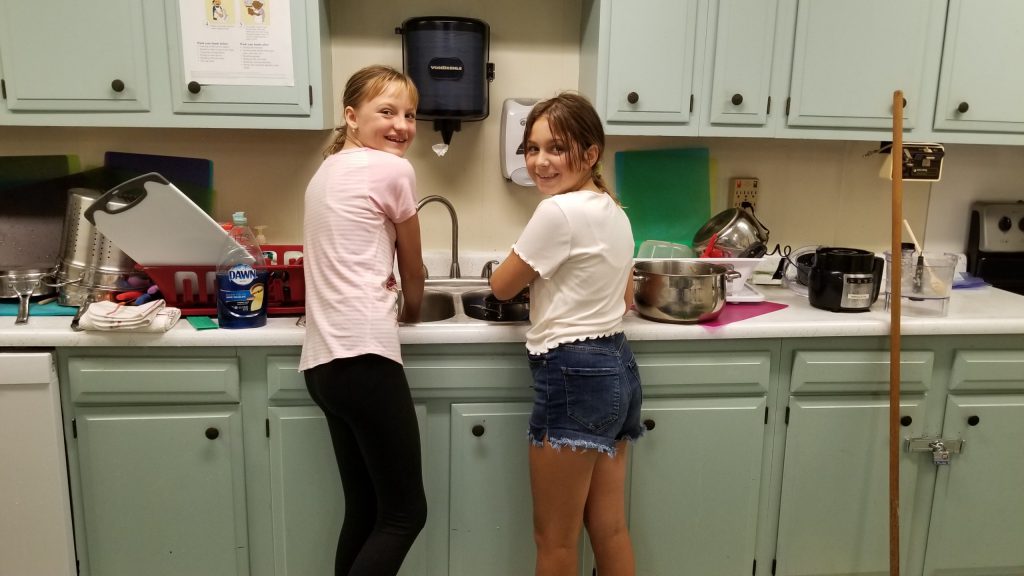
by Samantha Kennedy | Apr 22, 2022

Prudence Caskey, Santa Rosa County 4-H Agent. Photo source: UF/IFAS
Written by Prudence Caskey, Extension Agent II – 4-H Youth Development, UF/IFAS Extension Santa Rosa County
The hot Florida summer is approaching, and we all need to make sure we focus on hydration in the heat. Dehydration is very common in hot, humid environments. Many people do not drink the recommended amount of water. Many of us have our coffee in the morning and unless we go out to lunch and someone gives us water, we seldom think about water during the day. Another confusing concept is how much water we should drink. Growing up, we were told to get eight glasses of water a day. That is 64 ounces. Let’s see if that adage still holds true today.
How much water should I drink?
The best way to calculate how many ounces of water to drink is to multiply your weight by .67 or 67%. For example, a person weighing 150 pounds would need 100½ ounces or a little over 12½ cups. On the other hand, a person weighing 200 pounds would need 134 ounces or 16¾ cups.
Is that all the water I need?
No, as you sweat, you lose the water you have already consumed. If you are sweating for 30 minutes, you need to replenish your hydration with 12 additional ounces of fluid.
What fluid should I drink?
The main thing to remember when it comes to hydration is, just because it is wet does not mean you are being hydrated. Different fluids are absorbed by our bodies differently. Some alcoholic beverages remove hydration from our bodies as we drink them. Below is an example of how our bodies absorb some common beverages:
- Water absorbed at 100%
- Sparkling Water absorbed at 100%
- Skim Milk absorbed at 90%
- Buttermilk absorbed at 90%
- Whole Milk absorbed at 80%
- Apple Juice absorbed at 88%
- Decaffeinated Coffee absorbed at 90%
- Coffee absorbed at 80%
- Sports Drinks absorbed at 50%
- Energy Drink absorbed at 40%
- Wine absorbed at negative 150%
- Beer absorbed at negative 60%
- Sake absorbed at negative 180%

Staying hydrated in the heat of summer is an important part of sun safety. (Photo source: UF/IFAS File Photo)
- Liquor absorbed at negative 300%
This is a huge concept to grasp if you plan on being out at the beach with your friends this summer. With this example, a well-hydrated 150-pound person consumes the required 100½ ounces of fluid. Then, at a gathering, they have three glasses of wine. The standard five ounces per glass would mean they have removed 22½ ounces from their hydration after drinking only 15 ounces of wine. Be cognizant of what you add to your coolers this year.
What are the signs of dehydration?
There are many signs our bodies will give us to signal dehydration. Headache, nausea, and muscle pains are common. However, the most common sign of dehydration is thirst. That’s right, if you are thirsty, it is your body’s way of letting you know you need fluids. Just be careful which fluids you choose this summer when you are out enjoying the Florida sun.
Learn more at: https://edis.ifas.ufl.edu/publication/FY1409
UF/IFAS is an Equal Opportunity Institution.

by Samantha Kennedy | Apr 4, 2022
“Stressed is just desserts spelled backwards.” When I was younger, I took this saying to heart. If I was stressed, I reached for the sweets. That instant rush of sugar to my brain provided a feeling of happiness and contentment. But it was only temporary. Once the sugar high wore off, I went back to feeling overwhelmed with stress, which just made me reach for more sweets.
It took me much too long to realize this was an endless and unhealthy cycle. Stress eating, especially stress-eating junk food, was such an ingrained habit for me, I did not even think about it having negative consequences such as weight gain and high blood sugar, both of which can be exacerbated by stress itself.
More recently, I have taken an interest in healthier coping strategies. Stress is an inevitable and integral part of our lives. We cannot avoid it. But we can seek ways to deal with it that do not add even more stress (or calories) to our body. One of the most helpful strategies I have adopted to cope with stress is to strive to live more mindfully.

Spending time in nature has been shown to decrease feelings of stress, lower blood pressure, and increase feelings of calm. (Photo source: UF/IFAS File Photo)
Mindfulness has become a bit of a buzzword over the last few years, but do not let that trick you into thinking it is just a fad. Mindfulness and everything it entails has been around for decades (even longer!). Practices such as mindful breathing, tai chi, and meditation are all part of mindfulness, which is simply an umbrella term used to describe strategies for dealing with difficult emotions, managing stress, and staying present in everyday life.
One of the things I have found most valuable in my foray into mindfulness is the ability to better recognize the signs of stress in my body. Early recognition of stress signals allows me to put one of my new mindfulness skills into practice to combat their effects. This may include simply pausing for a few moments and consciously breathing or taking a short walk in the sunshine while allowing the sounds around me, and not my stressful thoughts, to become the focus of my attention.
Another good practice for stress reduction in general is to immerse yourself in nature whenever possible. Whether that is hiking one of the many local nature trails, kayaking in the springs, or relaxing at the beach while listening to the waves, spending time in nature has been shown to alleviate stress. Even watching a brief nature video online has been shown to lower blood pressure and elicit feelings of calm.
April is Stress Awareness Month. I challenge everyone to take some time this month to really think about what stress looks like for you and how it shows up in your mind and body. How do you usually cope with it? If the answer involves over-indulgence in a substance such as food or alcohol, I urge you to try a new, healthier way to cope. Go for a walk. Focus on your breath. Even try meditation with the help of a mindfulness mobile app. It may feel weird at first, but if you keep at it, it will soon become a new healthy habit that you will reach for instead of that bag of chips.
UF/IFAS is an Equal Opportunity Institution.

by Samantha Kennedy | Oct 26, 2021
If baking were a feature film, flour would be the lead actor. While there are a lot of important supporting castmates, flour is the star. It serves as the foundation upon which baking masterpieces are built, providing structure, texture, and mouthfeel (the physical sensations food provides in the mouth) to the final product.
But here is the thing: Not all flours are created equal. There are many types of flour out there, but not all of them will provide the same results. Different types of flour have different levels of protein, gluten, and fiber, and react differently with their companion ingredients. Need all-purpose flour but only have rye flour? Expect a nuttier, grainier outcome – or even possibly a disaster!
Depending on the type of flour used, different quantities of other ingredients may be called for, such as water or oil, salt, butter, sugar, baking soda, or baking powder. Not all flours are easily interchangeable, and some flours can only be partially substituted for others, or the final product may be dramatically different.
For example, want to substitute whole wheat flour for all-purpose flour? Sure, it’s possible, and is much easier to pull off in quick (non-yeast) breads such as muffins, pancakes, and biscuits. However, in yeast breads, switching out 100% of white flour for whole wheat without adjusting other ingredients will inevitably result in a final product that is less airy and more dense (less rise), which may adversely affect the flavor and texture.
What to do? Since whole wheat flour absorbs more liquid than white flour, for every 1 cup of whole wheat flour substituted, increase the liquid by 2 teaspoons, and then let the dough rest for 30 minutes before kneading to allow the liquid to be absorbed. This will result in a softer, more malleable dough that will yield more favorable final results.
There are many more substitution tips out there – more than could possibly be covered in one article. But here are a few common types of flour that may be called for in baking:

All-purpose flour is a common, highly versatile type of flour that can be used successfully in many baking recipes. (Source: Samantha Kennedy)
All-purpose flour: Made from the soft, chewy internal part of the wheat kernel – the endosperm – it is a highly versatile type of flour that can be used in just about any baking recipe. This type of flour generally contains about 10-11% protein.
Self-rising flour: I like to think of this as all-purpose flour with a kick. Why? Because it already contains the salt and baking powder that would otherwise need to be added to all-purpose flour to make the final product rise. While it can be substituted for all-purpose flour, it is important to remember to leave out the additional salt and baking powder called for in the recipe.
Bread flour: This type of flour has a higher protein content than all-purpose flour – about 12% – and produces a dough with more gluten, resulting in a light, airy loaf with good volume. All-purpose flour can be used instead with positive results.
Cake flour: This type of flour contains about 7.5% protein and results in a final product that is crumblier than bread, which is desirable in a cake or cupcake. If using all-purpose flour instead, substitute 1 cup minus 2 tablespoons of all-purpose flour for every 1 cup of cake flour called for in the recipe.
Flour is a vital ingredient in nearly all baked goods. Using too much, too little, or a different kind than called for can result in an unsatisfactory final product. Learning the differences between common types of flour and how they can be interchanged with one another will go a long way towards achieving baking success.
For more information about this or other baking topics, please call Samantha Kennedy at (850) 926-3931.
UF/IFAS is an Equal Opportunity Institution.

by Samantha Kennedy | Aug 24, 2021
What do you think of when you hear the word bacteria? If you are like most people, you probably think of those teeny, tiny germs that are invisible to the naked eye, but have the potential to cause serious illness. And while you would not be wrong to think that way, you would be leaving out a huge percentage of bacteria that are considered “good” bacteria.
The common name for “good” bacteria is probiotics (from the roots pro and biota, meaning “for life”). They are a group of beneficial microorganisms that have been shown to improve a variety of digestive and other conditions, such as irritable bowel syndrome and urinary tract infections.

Foods like Greek yogurt are a good source of probiotics, which have been shown to have a positive effect on digestive health. (Photo source: Samantha Kennedy)
Probiotics are found in a variety of foods, primarily fermented foods such as Greek yogurt and cottage cheese, fermented drinks such as buttermilk and kombucha, and pickled vegetables such as pickles and sauerkraut. The bacteria required for the fermentation process – the process that gives these foods their tangy flavor – have been shown to provide natural health benefits.
The primary benefit of probiotics is their positive effect on a variety of gastrointestinal ailments such as diarrhea, ulcerative colitis, Crohn’s disease, and stomach ulcers. According to Harvard Medical School, probiotics can also help reduce the presence of harmful bacteria, such as H. pylori and C. difficile, both of which can cause digestive problems.
In Northern Europe and many Asian countries, people get probiotics mainly from food sources, where fermented foods are consumed more regularly. Here in the United States, many people get probiotics from over-the-counter (OTC) supplements. These products are not regulated by the Food and Drug Administration, however, so when choosing OTC supplements, be wary of the claims they make.
The information about probiotics is not all positive, however. Some people report an increase in diarrhea after taking probiotics for the first time, which usually goes away with time. Also, people with a compromised immune system may experience illness caused by probiotics if too many are taken.
That being said, OTC probiotics have also been shown to have positive effects on health, when taken as directed. However, they are not a cure-all, and more research needs to be done to learn more about their complete effects on gastrointestinal health and immune support. Just like with other supplements, it is important to consult with a physician or pharmacist before beginning a probiotic regimen.
So, what is the final word on probiotics? Well, it depends. While they are not a magic bullet that can cure everything that ails you, they can be a positive addition to a healthy diet. Many foods that contain probiotics also contain other important nutrients such as protein, vitamins, and minerals, which are an important part of a nutritious diet.
One more thing: do not confuse prebiotics with probiotics. Prebiotics are non-digestible, short-chain carbohydrates that serve as fuel for probiotics. On their own, they do not offer any health benefits, but they can serve to promote the growth of probiotic species. Foods with high amounts of prebiotics include fruits and vegetables and whole grains, so a diet rich in these foods can help promote the growth of beneficial bacteria.
To learn more about probiotics, please contact your local Extension agent.
UF/IFAS is an Equal Opportunity Institution.

by Samantha Kennedy | Jul 9, 2021
I have just wrapped up my three-day Kitchen Creations camp and am happy to report that it was a big hit with the campers. Each day had a different country theme. Day 1 was Italian, Day 2 was Mexican, and Day 3 was American. All the dishes the kids made, including dessert, represented that day’s country.
The recipes ranged from simple to more complex, allowing the kids to build on basic skills to learn more advanced ones. For some campers, boiling a pot of water was a daunting task. For others, they learned how to caramelize and julienne. The campers worked in teams to create two main dishes, a salad, and a dessert each day, which was shared with the entire group.
I am pleased to announce there were no leftovers. The kids either ate it all, or wanted to take their culinary creations home to share with their families. If that is not a testimony to the camp’s success, I do not know what is.
I also was impressed with the campers’ willingness to try new things. Many of them were skeptical about the vegetable lasagna we made on Day 1, but nearly all the kids were willing to at least give it a try. And just like the baked ziti, Caesar salad, and chocolate biscotti we made that day, there was nothing left at the end of the day.
Kitchen skills are essential for healthy living, and teaching kids how to cook when they are young provides a strong foundation upon which to continue to build.

Kids can be eager helpers in the kitchen, even when it comes to cleaning up. Photo source: Samantha Kennedy, UF/IFAS Extension
Kids are eager learners in the kitchen. All the campers in Kitchen Creations were enthusiastic and ready to learn. They were proud of their creations, wanted to learn new skills, and were excited to use new tools and practice using familiar ones.
It is understandable that some parents may be reluctant to have younger kids in the kitchen. Maybe they are wary of possible injury. Maybe they are just so busy they do not have time to teach and supervise their children in the kitchen. It is a hectic world out there! But I know from personal experience with Kitchen Creations camp that kids, especially those interested in cooking, are more trustworthy and less accident-prone in the kitchen than some might expect.
The campers in my cooking camp are between the ages of 10 and 12 and in the four summers I have offered it, I have had only a few minor mishaps. The campers are aware of possible dangers in the kitchen. Things are hot. Things are sharp. Things are heavy. They are very conscientious about safety and handling things the correct way.
Kids who cook grow into adults who cook. Cooking is an important life skill that will be useful through someone’s entire life. Whether it is a student putting together quick, healthy meals and snacks to help them study, a busy parent trying to balance the responsibilities of everyday life while planning and making nutritious meals for their family, or a doting grandparent making something special for their grandkids, cooking is vital and brings people together.
Cooking is life.
I encourage you to support the budding chefs in your life. Instead of turning them away, allow them to help. Taking the time to prepare a meal together and then sharing that meal with loved ones builds stronger relationships while teaching important skills for a successful life.
UF/IFAS is an Equal Opportunity Institution.











